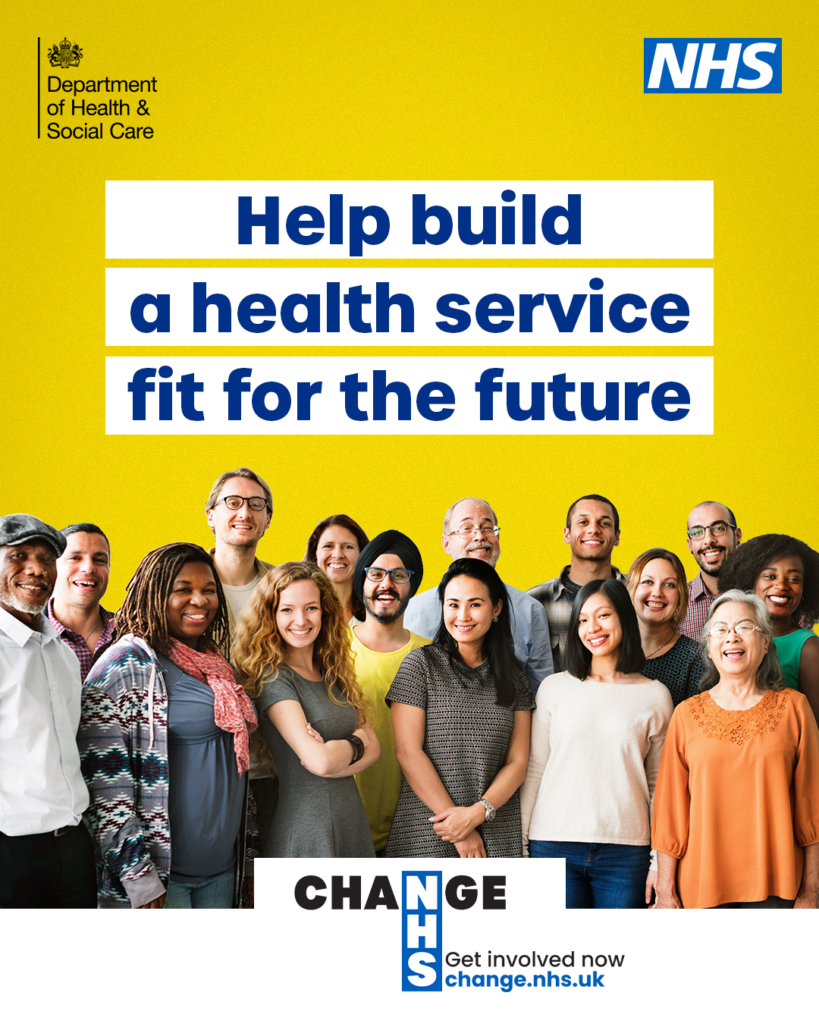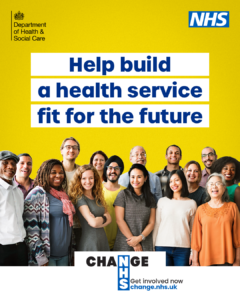NRAS’ response to the 10 Year Health Plan
22 January 2025
In November 2024, Peter, NRAS’ CEO, wrote a blog confirming the steps that NRAS were taking as a charity to respond and engage with the ongoing public consultation about the NHS 10 Year Health Plan. We have continued to encourage everyone to engage with the consultation platform and be a part of the process.
The platform, Change NHS.org has been live since October allowing the public, patients, staff and experts to share their comments about the three main areas identified as priorities:
- Sickness to Prevention
- Hospital to Community
- Analogue to Digital

As a national patient organisation, we have written our response knowing the challenges faced by those living with Rheumatoid Arthritis and Juvenile Idiopathic Arthritis. We believe that the main priorities listed above can become the building blocks to improving access to services and better care across the lifetime of our beneficiaries. Within our response we highlighted a number of issues but also some creative solutions that could be used and in this article we are sharing some of the key messages in our organisational response.
What does NRAS want to see included within the 10-Year Health Plan and why?
Our response identified that RA, JIA and other forms of musculoskeletal conditions have not, historically, been included within specific planning for the NHS. This is perhaps surprising because 30% of the UK population (around 20 million people) have a musculoskeletal condition with around 450,000 of those 20 million people having RA and a further 12,000 children living with JIA (i.e. quite a small proportion of the whole). Most individuals diagnosed with RA will be of working age and there is a significant burden on individuals and society related to loss of employment/productivity and increased costs to the NHS as a consequence.
We also highlighted that these conditions are long-term, often life-long health conditions and usually require people to have specialist care for the rest of their lives. Chronic long-term conditions require different planning than emergency or one-off care and this should be reflected within the 10-year plan. The work NRAS contributed to the Forgotten Lives work highlighted that around 13 million people are living with more than one long term health condition.
Another point which we want the NHS to consider in their plan is about involving relevant stakeholders (organisations and key people) in decision making. Too often we see the NHS working in silos (on their own and not working together) which is not conducive to proactively sharing best practice. This is not just related to a single disease or condition but across regions and countries within the UK. We see areas of excellence and innovation which could be widely shared and adopted but sadly are not: causing the NHS to be constantly re-inventing wheels. The charitable sector can be a valuable source of information and resources and it is important not to keep wasting the time and resource of the hard-pressed NHS and their workforce. Engaging with the voluntary and community sector at an early stage in the development of the Plan will be of huge benefit because health charities have a wealth of knowledge and skill at being able to deliver what people really want and need.
Sickness to Prevention
We have highlighted that prevention is not a one size fits all process and that there is a lot of focus on primary prevention from obvious risk factors such as smoking, obesity and alcohol dependence. There is not as much discussion around secondary prevention of other long-term health conditions in people already living with at least one long-term health condition. RA and JIA are conditions that cannot be prevented but steps can be taken to stop them from getting worse. It is also possible to prevent common secondary conditions such as heart disease, diabetes, osteoporosis, etc.
For those living with RA, we highlighted the trigger points for individuals within their diagnosis journey: the time between onset of symptoms and consulting a GP, the number of consultations with a GP before referral to secondary care and time taken to see a specialist and start treatment. Delay in any of these three trigger points can result in increased joint damage and worse long-term outcomes. We focused on how to ensure there is timely access and referral and highlighted success stories from hospitals and Trusts across the country.
Finally, we commented about the issue for people living with long-term conditions and often struggling to get easy access to specialist services when needed. For example: we completed a survey last year on patient access to specialist nurse advice lines and found that people are waiting significantly longer for a response and nurses are struggling with the impact of increased volumes of calls which are not funded. This can result in individuals being without support and the potential for further joint damage or disease instability.
Hospital to Community
For our beneficiaries, most will be treated by a specialist at a hospital clinic as managing and treating inflammatory arthritis is complex. We acknowledged that there is often a risk of individuals travelling considerable distances to see specialists – this can often happen in JIA when many families are not in close proximity to a specialist paediatric rheumatology centre and for those with RA/JIA living in more rural areas. We therefore highlighted the importance of ensuring that GPs are well trained and paid for routine monitoring which would ensure that prevention is at the heart of the work that the NHS does. Around 80% of people with RA will have a secondary condition and so monitoring and prevention should be at the top of the agenda if long-term cost to the NHS is to be reduced. This is true of anyone living with an inflammatory autoimmune condition, not just RA/JIA.
Our next points were around the fact that simply moving medical staff into the community won’t necessarily mean that there is better universal access to best care or that problems won’t continue to arise. Health inequalities are well documented and a lack of outreach programmes to serve people and communities less likely to engage with health services, who live in socially deprived areas and/or who live a long distance from a rheumatology centre, will continue to be disadvantaged.
Analogue to Digital
One of the major challenges that we highlighted was around outdated technology being used within the NHS. We referenced examples where hard copy prescriptions are required to be sent in the post and how these older methods of communication result in delays and add an unnecessary burden to an already stretched healthcare workforce.
We also discussed the importance of sharing data widely to ensure that patients are receiving the best care possible. One example of this would be remote monitoring of conditions like RA and JIA. There is a heavy reliance on individuals to manage their own care especially where they are seeing their teams less often (Patient Initiated Follow-up Pathways). Having the ability to access digital tools and resources available from organisations like NRAS will be beneficial to overall patient satisfaction and acquiring improved supported self-management skills.
Recommendations
Throughout our response we provided:
- clear examples of how things can be improved
- highlighted real world examples of where care is outstanding
- urged the NHS to consider not only spotlighting good practice but sharing the tools to make excellence the standard practice
- encouraged more use of and collaboration with third sector organisations, such as NRAS, commissioning third sector organisations to support and educate patients.
- highlighted the importance of ensuring there are outreach programmes for communities and demographic groups who need more support.
Whilst this does not include all of the detail we put into our submission, it serves to highlight the important points we have raised on behalf of all of those living with RA, JIA and their families and health professional networks.
We would encourage everyone to respond to the platform with their own feedback and responses using the link below:
